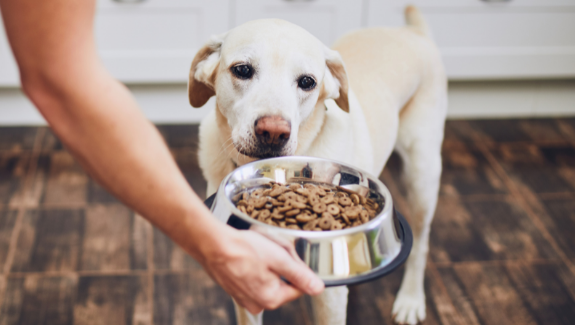
Ways To Properly Store Your Dog's Food
April 29, 2022According to a recent study, not enough people are aware of how to prevent pets and owners from getting sick due to feeding and hygiene practices. Despite the official guidelines set by the Food and Drug Administration (FDA) in the US, fewer than five percent of the 417 respondents to the survey were aware of how to handle their pet's food correctly. Only one in five survey participants said they rinsed off their hands with hot water and soap before feeding their pup, and fewer than two in five rinsed them afterward.
The guidelines cover proper storage methods, preparation, and handling of food. They also feature cleanliness and maintenance of dogs' bowls, as well as reporting issues with food and treats. The FDA guidelines should be more widely publicized, and backed up by rigorous scientific research to demonstrate their benefits, the researchers assert. It's not just the responsibility of dog owners, but also that of the FDA, they argue.
There are some bright spots, though: Almost all respondents reported that they followed some of the guidelines, such as not feeding raw food, inspecting food packaging for damage before serving, and not scooping food from the pet bowl. But generally speaking, there is much to be improved.

Contaminated dog food can have adverse effects on canines and humans, researchers say. It is important that pets eat a healthy diet, but it is possible for dried pet food, treats, and supplements to be contaminated with Salmonella. This bacteria can cause serious illness among humans and pets. When the infection spreads beyond the intestines, life-threatening complications are possible. This study highlights that pet food can make pets and people sick so proper food preparation should be observed at all times.
Here are some tips on how to store your pet’s food
· Don't use food containers.
Containers are typically not washed between bags. Instead, they put new kibble on top of the old, contaminating it with rancid fats. Reusing a container after it has been empty leads to rancid fats collecting on the sides of it, contaminating it with new kibble as well.
· Keep your pet’s food in its original bag.
Using a pet food bag is extremely effective at preventing oxygen, moisture, and light from damaging food. Sometimes, the bag and the technology behind it are worth more than what's inside!

· Store foods in dark, cool places.
Condensation and mold can occur due to temperature changes.
· Avoid freezing your kibble.
Moisture is now present on the food after the kibble thaws.
· Ensure proper storage of your dog's supplements.
Supplements are important for your dog’s health. It is important that you follow the brand’s recommendation on how to properly store it. For example, we recommend refrigerating our salmon oil to extend its shelf life by avoiding direct sunlight, heat, and moisture exposure. Storing it correctly can prolong its shelf life.
With owning pets comes responsibilities. The insights and instructions within these guidelines will help bring awareness of how to properly feed your pets and lessen the probability of putting yourself and your pet’s health at risk.
FDA guidelines are helpful for pet owners to ensure safety among our families and pets. Thank you for reading this article. Please share it on your social media channels if you found it helpful.
